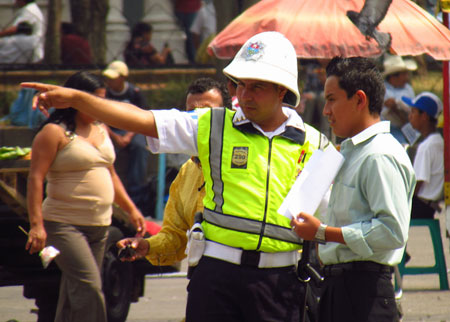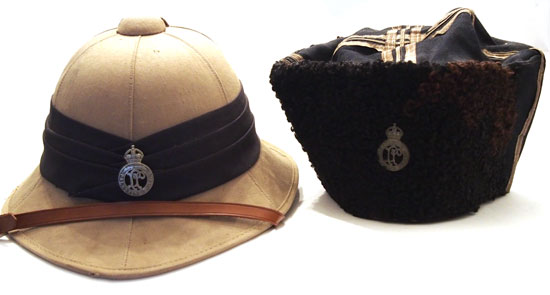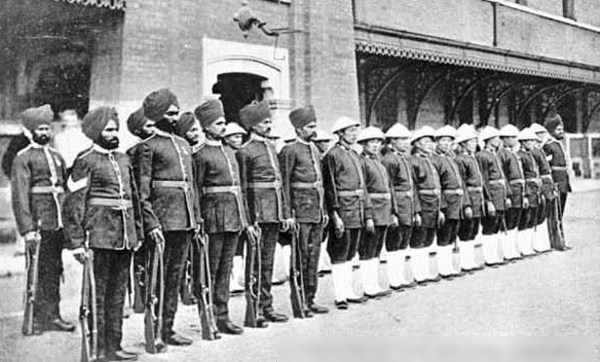 Figure 1. Top left, an Ellwood & Sons ‘Air Chamber’ military sun helmet, patented 1851, following traditional Indian designs it has a light weight cork construction, is cloth covered and has an ‘air pipe’ comb allowing air to freely circulate in the dome. Top right, a ‘Custodian’ police helmet by Christys & Co ltd (1952), uses almost identical construction methods; a version of this basic design was introduced in 1863 and was the only Custodian type for at least 10 years. Bottom left, a development of the sun helmet; a Christys & Co Ltd, late 1800s Colonial Pattern Sun Helmet. Bottom center, the attached Christys label. Bottom right, a near identically constructed police helmet, again by Christys, offered to the police as an alternative ‘Custodian’ style in the mid 1870s.
Figure 1. Top left, an Ellwood & Sons ‘Air Chamber’ military sun helmet, patented 1851, following traditional Indian designs it has a light weight cork construction, is cloth covered and has an ‘air pipe’ comb allowing air to freely circulate in the dome. Top right, a ‘Custodian’ police helmet by Christys & Co ltd (1952), uses almost identical construction methods; a version of this basic design was introduced in 1863 and was the only Custodian type for at least 10 years. Bottom left, a development of the sun helmet; a Christys & Co Ltd, late 1800s Colonial Pattern Sun Helmet. Bottom center, the attached Christys label. Bottom right, a near identically constructed police helmet, again by Christys, offered to the police as an alternative ‘Custodian’ style in the mid 1870s.
Category Archives: Police
History and Headdress of the Palestine Police
Following the First World War the British found themselves with new territory carved out of the Ottoman Empire, which included Mandatory Palestine. To help administer this new “mandate” the British formed the Palestine Police Force. It was established on the First of July, 1920 by High Commissioner Herbert Samuel’s civil administration which took over responsibly in Mandatory Palestine from General Allenby’s Occupied Enemy Territory Administration . Continue reading
Conical Asian Hat of the Hong Kong Police
The conical Asian hat, known as a “rice hat,” “paddy hat” or even “coolie hat” originated in East and Southeast Asia, particularly China, Indonesia, Japan, Korea and Vietnam. While primarily used by civilians, the hat has been a military head dress and was used by Vietcong forces in the Vietnam War. But the conical hat was also used alongside the military sun helmet by Chinese and other native units. One in particular was the Hong Kong Police, which was established in 1844. Continue reading
Police Sun Helmets

The Guatemala City Transit Police use a colonial pattern helmet
Many police forces around the world still use white sun helmets during the summer months. Interestingly, many of these seem to be based on the colonial pattern helmet. Continue reading


